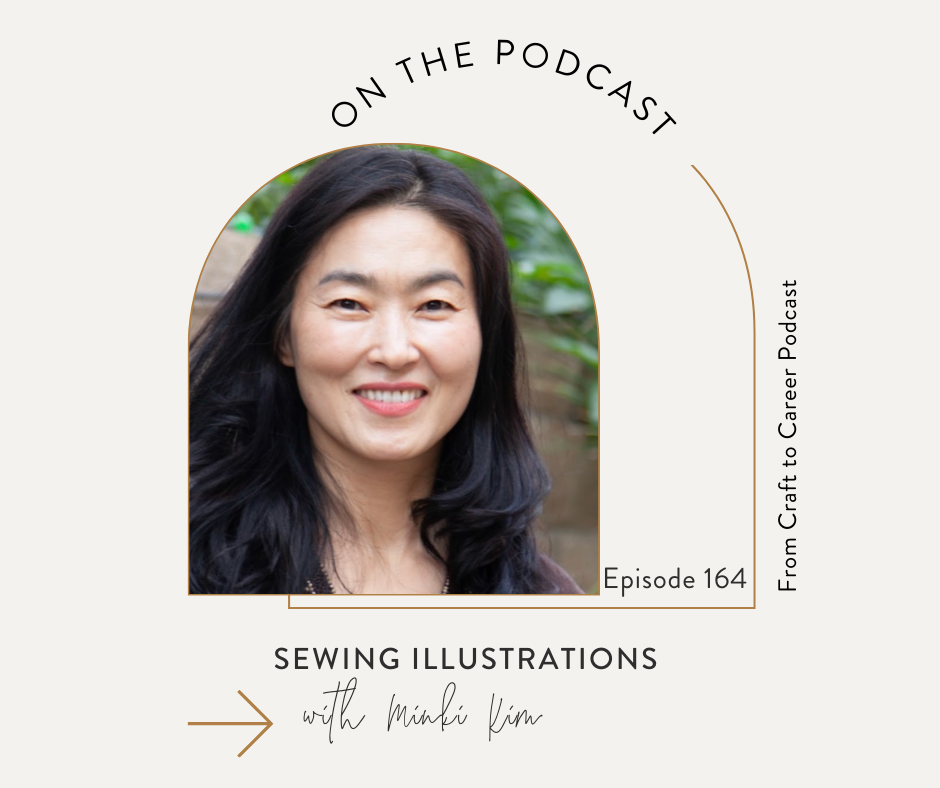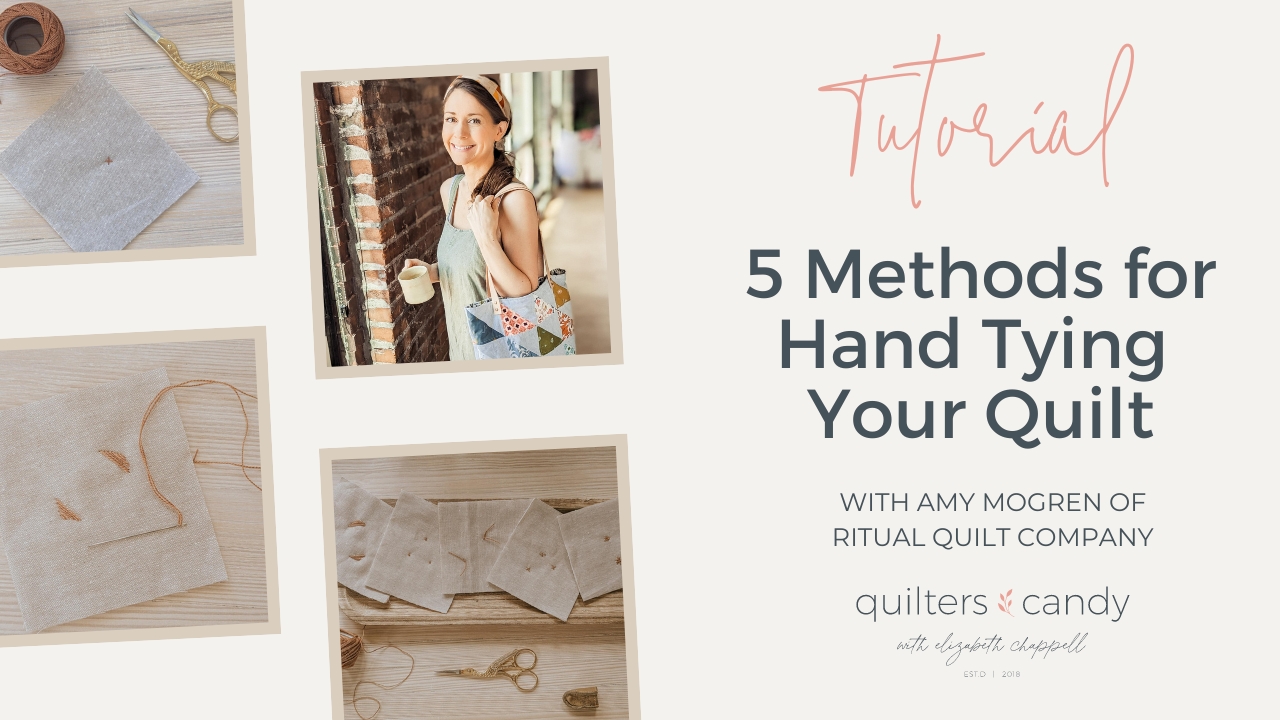The quilt above is finished with traditional ties.
SUPPLIES:
You do not need a quilting hoop for hand tying; simply rest the quilt on your lap and use your hands to bunch and gather the quilt as needed.
–Thread or Yarn: Yarn will result in a bulkier tie and a more old fashioned look. It requires a thicker needle and will make larger holes in your quilt, making it difficult to undo any work. This tutorial will focus on using thread.
–Thread: 12 wt Aurifil, #8 perle cotton, or embroidery floss.
–Marking tool: chalk pencil, water soluble marker, or erasable pen
–Needle: I typically use an embroidery needle for all hand quilting projects; you can find them at most craft stores. They often come in multipacks with a variety of sizes, so you don’t need to stress about choosing the exact right size. See what fits your thread and feels comfortable to you.
–Thimble: Optional, but you can wear it on the finger used to push the needle through the fabric.
–Batting: Use batting without scrim. If the batting has it, this will be noted on the front of the batting package. Scrim is polyester or glue that is added to the batting fibers to make them more stable and prevent stretching. Scrim makes the batting dense and more difficult to hand stitch through.
-My favorite batting to hand tie or hand quilt with is either bamboo or silk blend batting, due to the softness of the fibers.
TIE PLACEMENT
-Depending on the batting you use, ties can be placed up to 8-10 inches apart; but for extra security, I’d recommend 4-6 inches apart. Be sure to check your quilt batting package for specifics on how far apart you can place your knots without compromising the integrity of your quilt.
-Before you start tying, mark where you plan to place each knot. You can use one of the recommended marking tools, or if your patchwork is small enough, you could forgo marking altogether and place knots at the intersections of your patchwork.
















